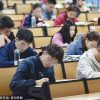Vietnam: Study abroad fever
Students from Vietnam are studying abroad in increasingly large numbers and may help “stabilise” enrolments in the “big four” study destinations, according to a new report. The South-east Asian country has emerged as one of the most resilient and fast-growing contributors to enrolments worldwide, says an ApplyBoard analysis.
In 2024, nearly 40,000 Vietnamese students secured study visas for the US, Canada, Australia and the UK, a rise of almost 20 percent since 2019. More than 150,000 Vietnamese students are currently studying abroad worldwide and ApplyBoard projects further growth over the next five years. This momentum is being driven by a combination of Vietnam’s strong academic culture, expanding middle class and deep-rooted global family connections, says the consultancy.
The analysis finds the US remains the leading destination for Vietnamese students, welcoming 18,500 Vietnamese study visa holders in the fiscal year 2024, a 27 percent increase over the previous year. This places Vietnam sixth overall for international student numbers in the US and fourth by study visa volume.
Australia has also seen significant growth. In 2023-24, Vietnam became the country’s third largest source of new international students. More than 35,000 Vietnamese students were enrolled across higher education and vocational education and training (VET) institutions in 2024.
In Canada, study permit approvals for Vietnamese students rose 16 percent between 2022 and 2024, with an additional 14 percent increase forecast for 2025 — although nearly half of these were for primary and secondary education.
Vietnamese student numbers in the UK have remained stable over the past decade. Between 2,000 and 3,500 student visas have been issued annually to Vietnamese students since 2008. The report projects that about 2,100 visas will be issued in 2025, consistent with historical patterns.
ApplyBoard notes that Vietnamese students are well positioned to study in English-speaking destinations, with strong English-language preparation in domestic schooling and a history of outbound mobility to nearby countries such as South Korea, China and Japan.















Add comment